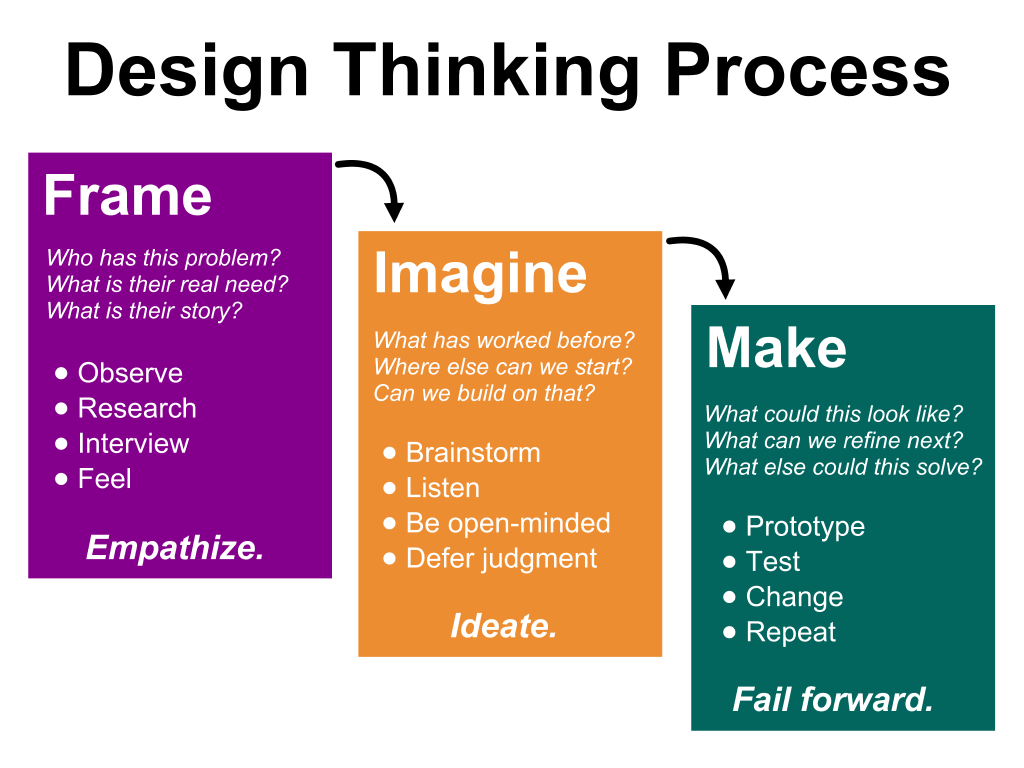

While it can be difficult to find the time to reflect on each project you complete with your class, this step is a crucial component of instructional design. Implementing project-based learning is a continuous process, and the evaluation you perform at the end of every project helps you identify what worked well and determine areas that need refinement. This process ensures that the projects, as well as your methodology for implementing them, get better with every iteration.
Pat yourself on the back. Endowing your students with choice and responsibility involves an element of risk, but you know that risk potentiates rewards. Project work is often a commitment of significant time and energy, and the completion of every project is an event worth celebrating. Take a moment to share your students' pride and satisfaction.
The celebration isn't the time to agonize over aspects of the project that weren't perfect. Use this time to enjoy what has been accomplished. You facilitated a project that helped your students learn how they best learn. Instead of standing at a lectern dispensing information, you modeled for your students how to approach new ideas, information, and problems. You empowered your students by providing them opportunities to think, and to think about thinking, that will help them in all subject areas and in the many years of life that happen after school is finished.
First and foremost, you need to ask if the project a success in terms of student learning. PBL takes significant classroom time. Did the investment pay off in terms of student learning, skills, and behavior? In what ways can you measure this?
Focusing specifically on the design, implementation, and management of the project, yourself the following questions:
Take time after presentations of learning to ask students for feedback about the project. You could start with a simple show of hands: “Should I do this again next year?”
Ask your students to describe changes they think you should make with the project to make it even better for future classes. Encourage them to provide specific feedback on the elements of the project they felt were crucial to learning as well as those they felt were a hindrance to success.
If you have identified problems that your students didn't mention, bring them up. Challenge your students to help you identify solutions. You can even use the design thinking process to structure student feedback, making your students partners in delivering effective instruction.

Look through your personal reflections and student feedback, but don't let yourself get overwhelmed by examining every detail. Once you have reviewed all of the potential items for improvement, list the three things you feel will be most important to address before implementing the project again.
As we often repeat, PBL is about the process, not the product. Plan to implement your changes and revisions immediately, before you undertake the project again with a new group of students. Don't get sidetracked by worrying about things that weren't perfect. Instead, expend that energy revising the process so it will be better.

Remember that some improvements you identify may not be specific to any given project. Capitalize on those improvements that you feel will aid in the implementation of your next project, even if the content is completely different.
Whether or not you use design thinking as part of your PBL process, an iterative process of reflection and refinement is essential to the successful implementation of project-based learning. It may be difficult at first, but both you and your students will reap the rewards of this hard work.
Move away from the idea solving all problems and toward the idea of next steps. Like so many of the good things in life, PBL is a journey, not a destination… for your students and for you. Enjoy the journey!
Creative Educator can help you bring project-based learning to your school.
Learn More8 first projects to get students using technology
Creative, digital book reviews
Fun and powerful ideas with animated characters

Wixie
Share your ideas, imagination, and understanding through writing, art, voice, and video.

Rubric Maker
Create custom rubrics for your classroom.

Pics4Learning
A curated, copyright-friendly image library that is safe and free for education.

Wriddle
Write, record, and illustrate a sentence.

Get creative classroom ideas delivered straight to your inbox once a month.
Topics